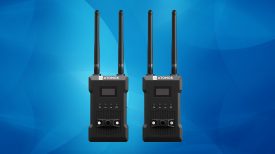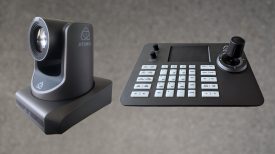Romeo Durscher knows drones. He’s in charge of DJI’s drone education program – helping spread the word about drones, how to fly them and how to get the most out of them. So he was the ideal choice to strap on hiking boots and a climbing harness when ABC’s Good Morning America team wanted a drone operator to help them transmit dynamic aerial pictures over a live link from remote locations as part of their Hidden Worlds feature.
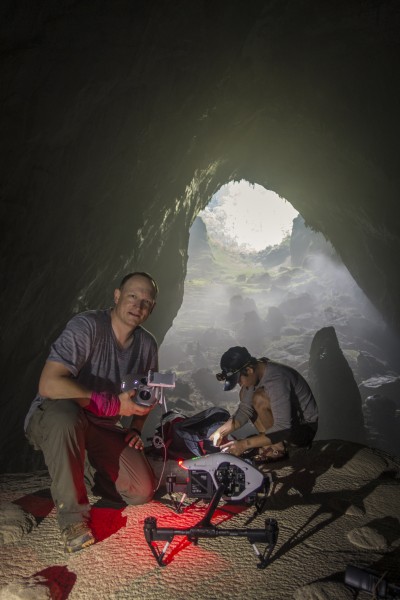
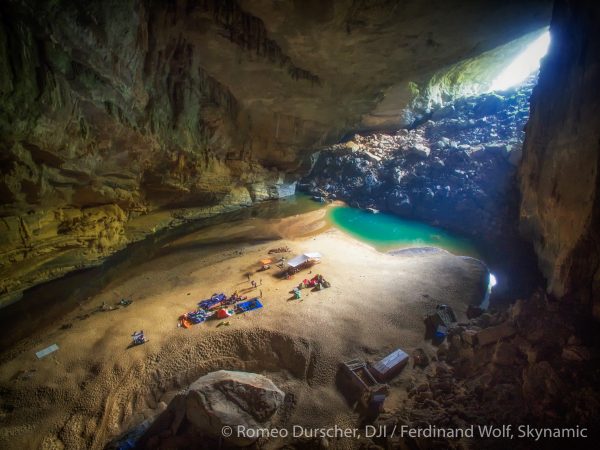
The most recent segment was based in Vietnam, in a pair of caves: Hang En and Son Doong. The more accessible of the two, Hang Eng, was used as a production base, with expeditions into Son Doong to capture footage that would be played into the live broadcast. And although the scale of the caves is massive (Son Doong is 5km long and 200m high), getting into position was not straightforward. “In the beginning I thought we would never fit through the tiniest holes,” says Durscher over Skype. “You had to shove your backpack in front of you – it really wasn’t a hike in the park.”
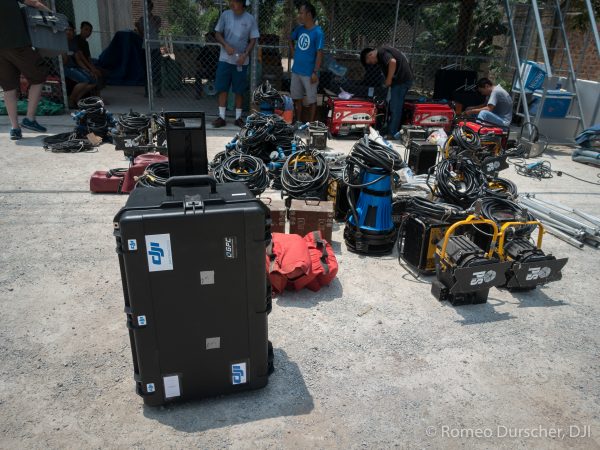
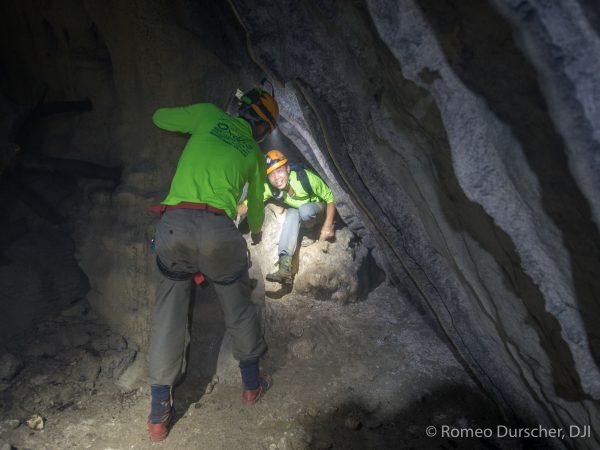
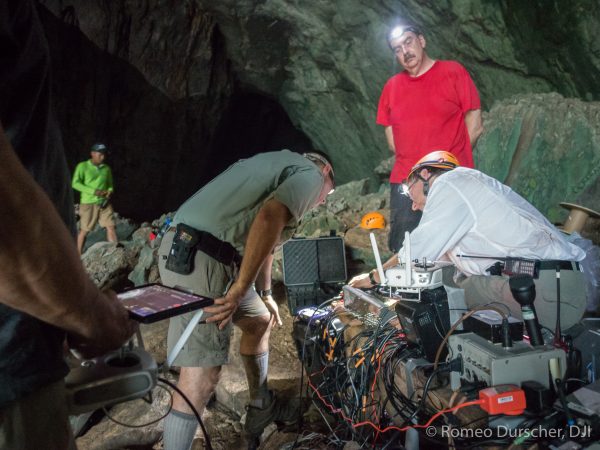
Porters helped carry the crew’s substantial amount of gear, including the DJI Inspire 1 drones that Durscher and specialist drone pilot Ferdinand Wolf would fly in the caves. As well as claustrophobic access tunnels, the humid conditions posed an energy-sapping challenge. “You get to the destination where you want to fly,” says Durscher, “and all you want to do is lay down and catch your breath… and then the real work starts.” Unfortunately the production schedule didn’t allow for much lazing around and conditions were far from ideal for flying.
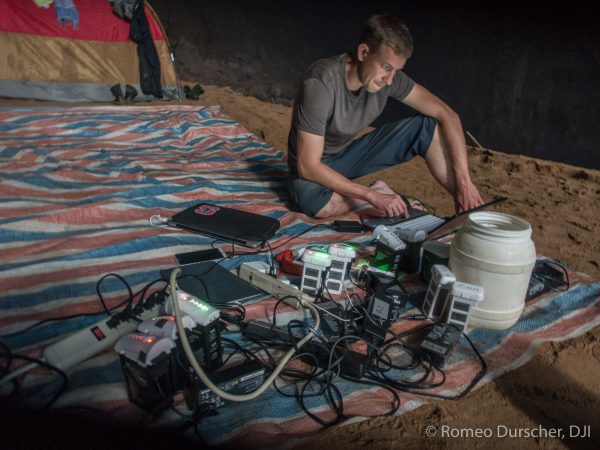
The ground was sandy and dusty and the air inside the caves was hot and humid – so much so that the drones were wet after each flight. Dolines, holes in the cave roof, allowed sunlight in during the day, providing spectacular views but also creating a microclimate complete with fog and thermals. “And needless to say,” continues Durscher, “because you are underground you have no GPS… so you fly in essence just by keeping your machine manually as straight as possible.”
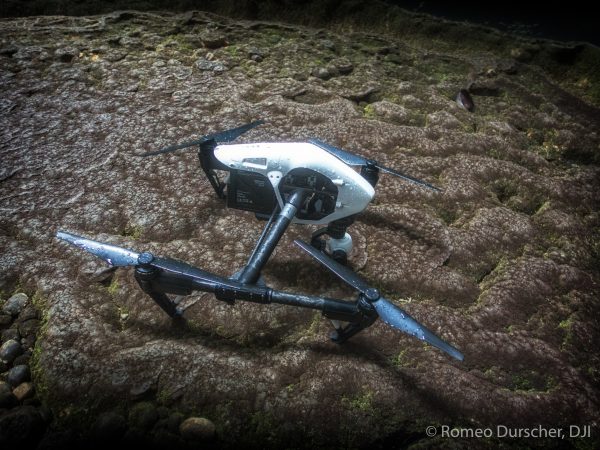
The lack of access to a satellite uplink also meant that the live transmission had to be beamed back from the surface. A video village was set up in Hang En, using ABC’s standard outside broadcast setup with a very long cable to connect to to the satellite uplink site. In fact this setup was more straightforward than getting material back to base from the Son Doong cave complex – where the quickest way to transmit to the upload site was found to be getting porters to carry hard copies of the data on foot.
But after a two-week survey trip, gallons of sweat and a full dress rehearsal the night before the live broadcast, the team was confident they would be able to deliver. And then…
“A few minutes before the live event starts everything changed … the studio in New York gave us different directions, a big thundercloud went overhead and we lost communications. So we just had to be ready and up in the air. That was a little bit stressful.”
Of course during the segment itself there’s no way for the viewer at home to see any of the off-camera drama, just some truly spectacular imagery. “I am honestly still amazed we all pulled this off,” says Durscher, modest to a fault.
And although he’s now safely home in the US, one member of the team didn’t make it back: the Inspire 1 drone used in the broadcast was retired from flying and remained with a local DJI dealer in Vietnam where it’s currently on display to potential customers.
Drone-ing on: top tips for extreme flying from Romeo Durscher:
1. Survey the location: “Going there for the first time… flying in the cave and getting a feel for it really helped when we went back and did the production. No matter where you go it really pays off to do a site visit.”
2. Take care of your kit: “Clean up your machine after each flight and dry it off. We brought some cans of compressed air and that really helped to get the dust and the sand out.”
3. Small is beautiful (and easier) underground: “It’s easier to fly in a small cave rather than a large cave: in a big cave you lose perception immediately because everything is so massive and you have no idea how close you are to the side or to the ceiling.”
4. Division of labour: “I trained someone from the team to be a spotter… and during the live broadcast we had one person be the pilot and one person be the camera operator.”
5. Don’t try and go it alone: “Even though we have all this technology it really took a big team effort to pull this together, not only between ABC and DJI but on the local side we had wonderful help.”



